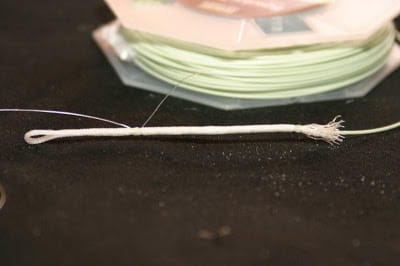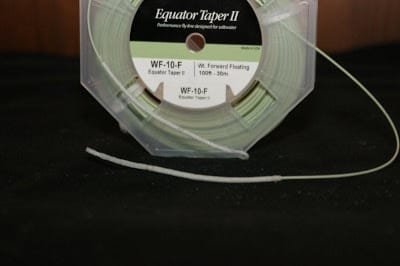Attaching the leader to the fly line is down to personal preference, but my favoured technique is to use a braided loop. However, it is best to make the braided loops yourself with 20 or 30lb braid, as most manufacturers don’t run the braid right back although the way through itself. These are fine for trout and small species, but they will not cut it in the salt.
 You will need a spool of 30lbs or 50lbs hollow braid,normally used as braided running line. I prefer Cortland or Gudebrod if you can get it as it is less waxy. You will also need a spool of 15lbs leader, nippers, scissors, a piece of thin wire or bobbin threader, a rug makers tool and some fishing glue or Aquasure. The rug makers tool is one of the most useful tools I have ever found for this task and makes the job so simple! The small blunt hook has a moving arm on it that closes as you pull it back.
You will need a spool of 30lbs or 50lbs hollow braid,normally used as braided running line. I prefer Cortland or Gudebrod if you can get it as it is less waxy. You will also need a spool of 15lbs leader, nippers, scissors, a piece of thin wire or bobbin threader, a rug makers tool and some fishing glue or Aquasure. The rug makers tool is one of the most useful tools I have ever found for this task and makes the job so simple! The small blunt hook has a moving arm on it that closes as you pull it back.
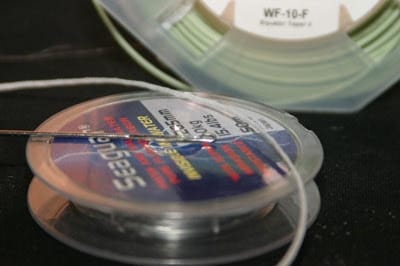 You want your loop to be about 9cm in length, so you need to cut off about 18cm from the braid. You then feed the rug makers (you can use a piece of wire for this or even heavy nylon in an emergency) up to the half way point. As you compress the braid it opens up, so the technique is to push it together, then push the tool up the centre without it splaying out.
You want your loop to be about 9cm in length, so you need to cut off about 18cm from the braid. You then feed the rug makers (you can use a piece of wire for this or even heavy nylon in an emergency) up to the half way point. As you compress the braid it opens up, so the technique is to push it together, then push the tool up the centre without it splaying out.
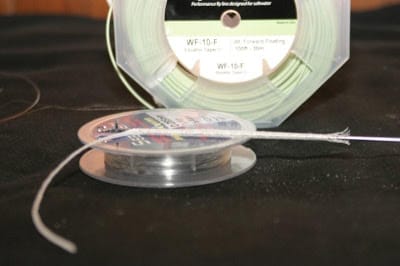 At about half way push the tool out through the side of the braid. Take the end of the braid and insert it into the hook, then simply pull it back through itself. Hay presto, one loop. By pulling the inner braid you can adjust the size of the loop. Trim the end with a pair of scissors.
At about half way push the tool out through the side of the braid. Take the end of the braid and insert it into the hook, then simply pull it back through itself. Hay presto, one loop. By pulling the inner braid you can adjust the size of the loop. Trim the end with a pair of scissors.
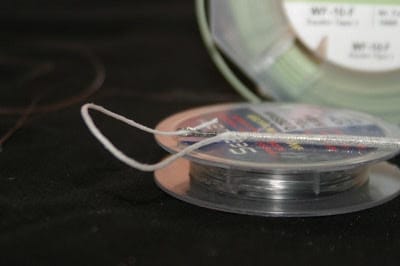
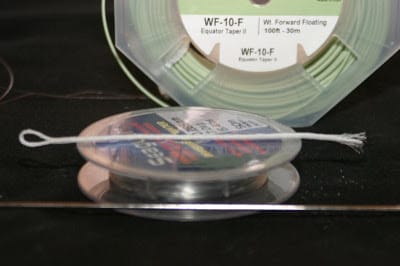
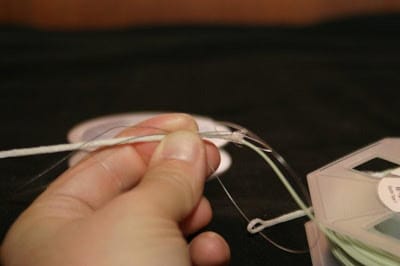
Move the knot you have made down to the end of the braid, and then lock it down. Use the nippers to cut the tags off nice and close, and the frayed braid at the end. Repeat the process about one centimetre below where the fly line tip is.